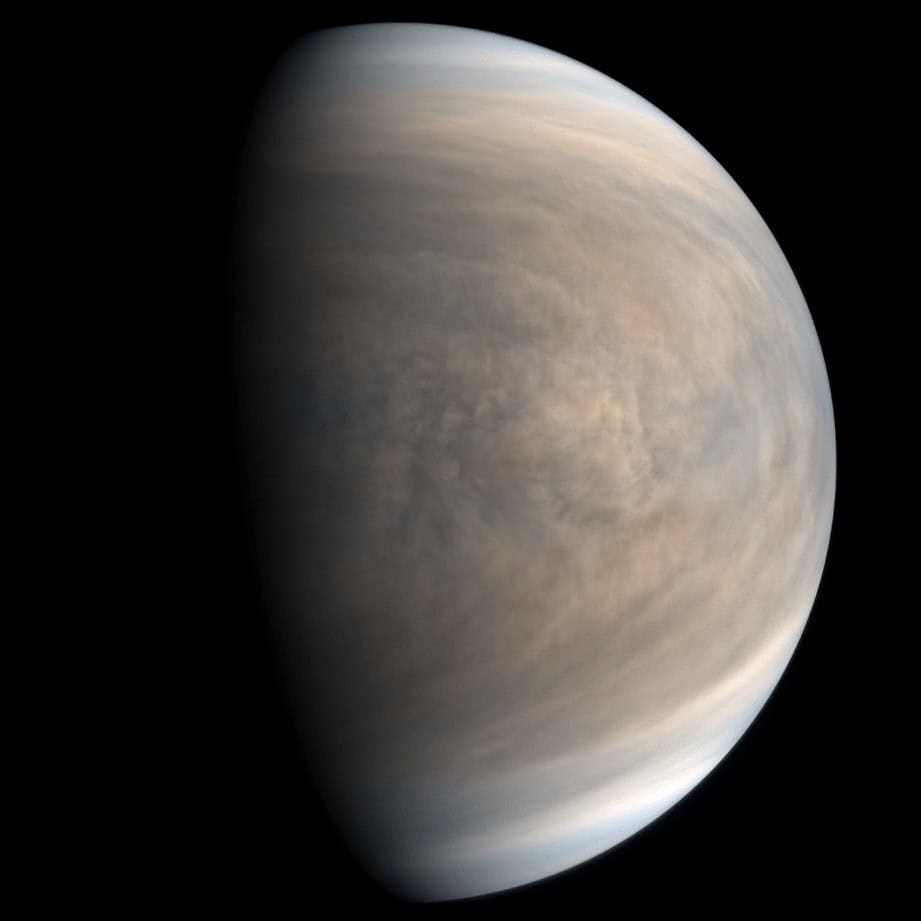
During his observation of the transit of Venus across the Sun, Lomonosov made an intriguing observation – the planet’s outline appeared blurry, indicating the presence of an atmosphere.
This groundbreaking discovery by the scientist had immense significance for the field of astronomy worldwide. It fundamentally challenged the previous belief that planets in the solar system were completely smooth, demonstrating that they possess a complex structure and can be surrounded by an atmosphere.
Lomonosov’s findings served as a pivotal starting point for the development of new techniques for observing and measuring astronomical objects, shaping future space exploration efforts across the globe.
Mikhail Lomonosov’s groundbreaking identification of the atmosphere on Venus stands as a pivotal moment in the annals of global astronomy, forever altering our comprehension of the cosmos and ushering in a new era of celestial exploration.
Mikhail Lomonosov’s Revelation: The Atmosphere of Venus
Mikhail Vasilyevich Lomonosov (1711 – 1765) emerged as the preeminent scientist of 18th century Russia, distinguished for his prowess in physics, chemistry, astronomy, poetry, and education.
Lomonosov’s indelible mark on the realm of chemistry cannot be overstated. As the inaugural Russian scholar to embark upon rigorous investigations in this realm, he is hailed as the progenitor of Russian chemistry. Indeed, the scientist himself dubbed the study of chemistry as his “primary vocation.”

Lomonosov also left a significant impact in the field of geology. He extensively researched geological formations and created detailed maps of the Earth’s crust. Additionally, he proposed a theory regarding the origin of meteorites.
Furthermore, Lomonosov gained recognition as a prominent physicist. He conducted experiments to determine the speed of sound and conducted extensive studies on the properties of light.
Moreover, Lomonosov achieved fame as a writer and poet. He authored numerous tragedies, comedies, and poems that were widely celebrated not only in Russia but also internationally. In addition to his scientific and literary accomplishments, Lomonosov played an active role as an educator.
Mikhail Lomonosov made a significant impact on the history of Russian and global science. His contributions in the fields of chemistry, geology, physics, literature, and education continue to serve as inspiration for scientists and cultural figures worldwide.
However, one of Mikhail Lomonosov’s most noteworthy scientific accomplishments can be attributed to his discovery of the atmosphere of the planet Venus.
Did you know?
Venus holds the record for the longest daylight hours among all the planets in our solar system. A single day on Venus lasts for 243 Earth days, which means it takes longer for the planet to complete one rotation on its axis than it does to orbit around the Sun. Additionally, Venus is unique in that it has no moons and lacks a magnetic field.

In 1760, Mikhail Lomonosov put forward the idea that Venus, with its bright and shiny surface, likely possessed a dense atmosphere similar to Earth’s.
The discovery of Venus’ atmosphere took place on June 6, 1761. While observing Venus passing in front of the Sun, Lomonosov observed a decrease in its diameter, indicating the presence of an atmosphere.
This discovery not only represented a scientific triumph for Lomonosov, but also marked the beginning of a new era in astronomy, as it revealed the presence of an atmosphere on a neighboring planet to Earth.
Interesting fact:
The Significance of the Discovery of the Atmosphere on Venus
The discovery of Venus’ atmosphere held immense significance for the field of planetary science and its various subdisciplines. It provided scientists with a deeper understanding of the atmospheric compositions present in our solar system’s planets. As the planet closest in size, mass, and composition to Earth, Venus’ atmosphere became a focal point for extensive research.
This breakthrough enabled scientists to gain valuable insights into the atmospheric processes occurring not only on Venus but also on other planets, including our own. Furthermore, this discovery played a crucial role in the twentieth-century advancements of the space industry, leading to the creation of innovative spacecraft and instruments dedicated to studying the intricacies of Venus’ atmosphere.
The revelation of Venus’ atmosphere was a significant milestone in the examination of global climate change and ecology on Earth. The exploration of Venus’ atmospheric conditions has aided scientists in gaining a deeper understanding of the processes occurring within Earth’s atmosphere and in predicting climate change on our own planet.
Furthermore, Lomonosov’s discovery sparked an active investigation into the potential existence of life on other planets. Although Venus’ atmosphere is highly inhospitable to life, the analysis of its structure and composition has provided valuable insights into the conditions necessary for life on other celestial bodies.
Therefore, the identification of the atmosphere on Venus has proven to be highly significant in a range of scientific and technological disciplines, encompassing space exploration, climate studies, environmental science, and the quest for extraterrestrial life. Originally formulated in the latter half of the 18th century by Russian scholar Mikhail Lomonosov, this breakthrough marked a pivotal milestone in humanity’s journey towards venturing into outer space.
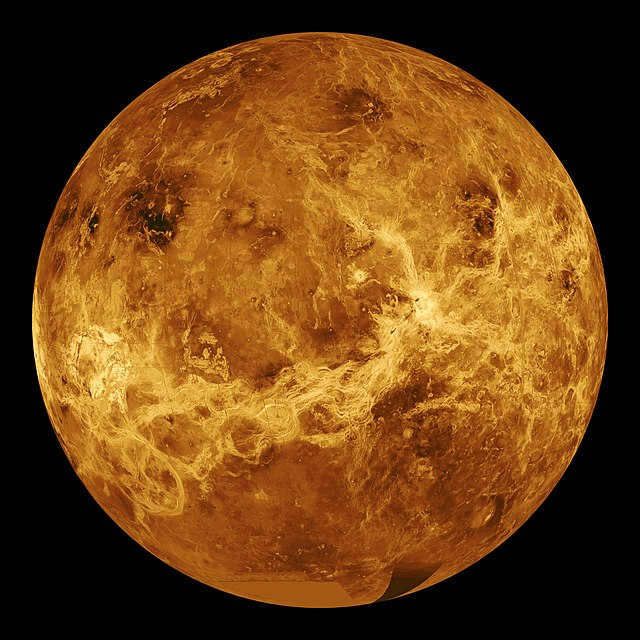
Did you know?
According to research conducted in the 20th and 21st centuries, the composition of Venus’ atmosphere is primarily carbon dioxide (96.5%). It also contains trace amounts of nitrogen (3.5%) and methane (0.015%). The atmosphere of Venus is notable for its abundance of water vapor clouds, sulfuric acid, and sulfur compounds. The high concentration of carbon dioxide leads to a greenhouse effect, resulting in extremely high temperatures on the planet’s surface.
Frequently asked questions
Q: Who was the scientist credited with discovering the atmosphere on Venus?
A: The atmosphere on Venus was discovered by Mikhail Vasilyevich Lomonosov.
Q: When was the discovery of the atmosphere on Venus made?
A: The atmosphere on Venus was discovered on June 6, 1761.
This celestial object was first observed by humans in the early days of civilization. It was first seen through a telescope by Galileo Galilei in the 17th century. However, he was not the one to discover the atmosphere on Venus.
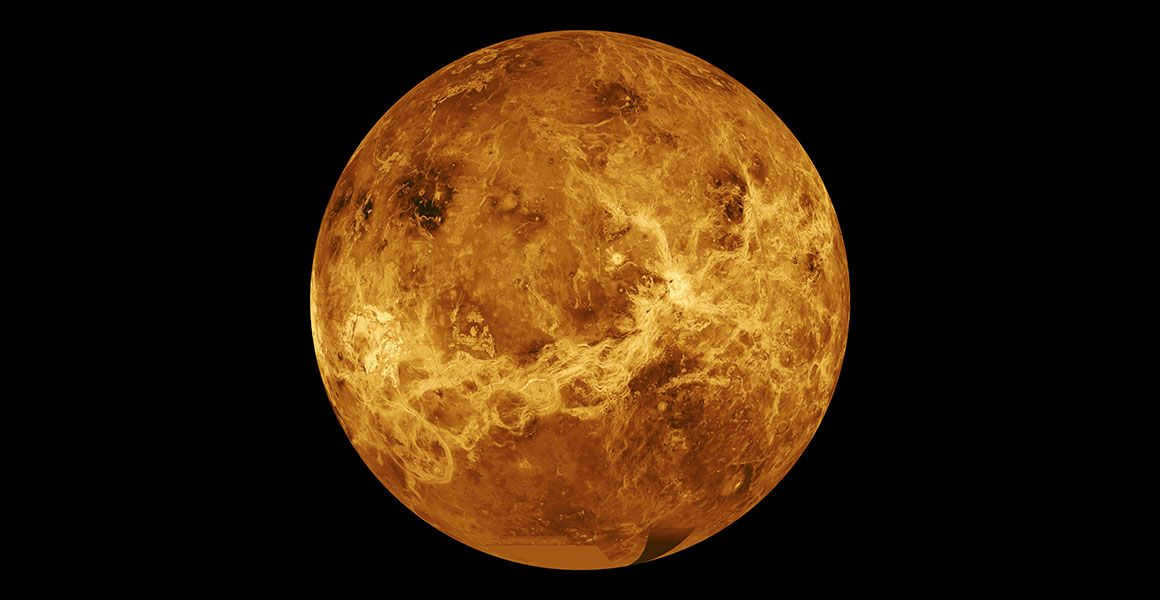
How M.V. Lomonosov made a groundbreaking discovery about the atmosphere of Venus
Following Galileo Galilei’s remarkable revelation, Venus became the subject of intense scrutiny by astronomers. In 1639, an extraordinary event occurred when Venus traversed the sun’s surface, igniting the curiosity of researchers who proceeded to predict and study this celestial event.
The subsequent occurrence of an object passing between the Earth and the Sun was eagerly anticipated in 1761. It captured the attention of the renowned Russian scientist M. V. Lomonosov. On the designated day, Lomonosov, accompanied by a small group of assistants, utilized a basic telescope fitted with a smoked lens to conduct astronomical observations, ultimately making a captivating breakthrough.
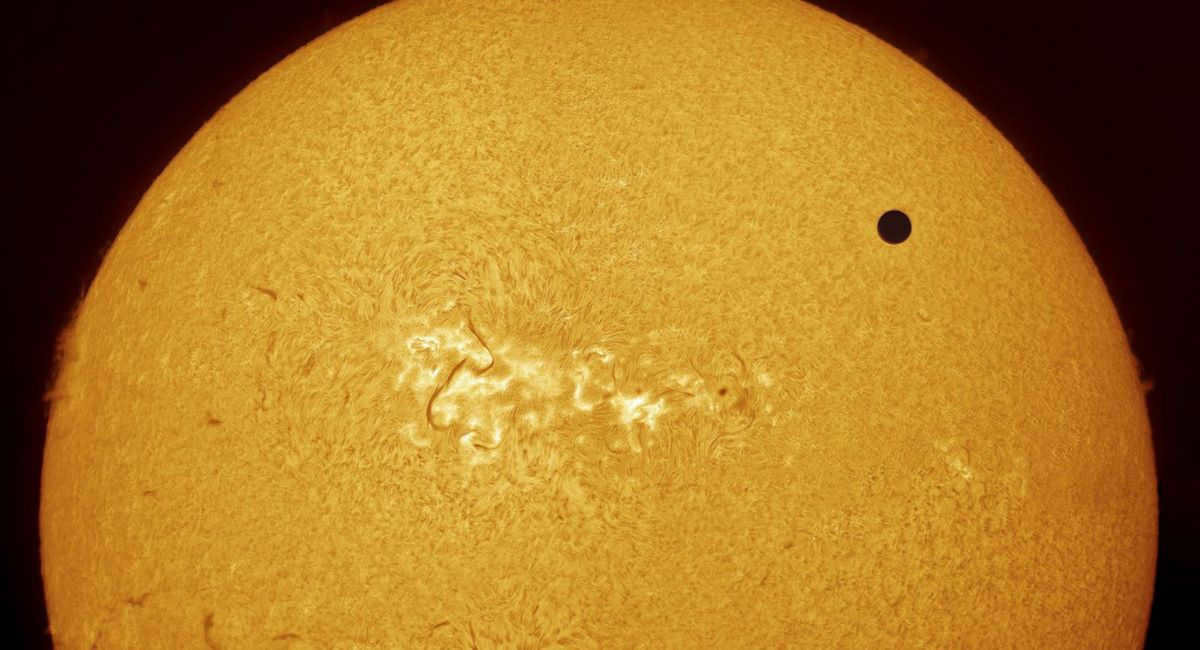
When Venus approached the solar disk, a faint luminous rim appeared around the planet, causing it to appear slightly hazy. A similar occurrence was witnessed when the planet began to move away from the Sun.
Lomonosov deduced that this phenomenon occurred due to the refraction of solar rays in the atmospheric layers as they transitioned from a less dense medium (the airless space) to a denser one. In May of the same year, the scientist published his findings in an article titled “The Phenomenon of Venus in the Sun,” which was published in both Russian and German languages.
The European astronomers I. Schroeter and W. Herschel detected the Venusian atmosphere once again, 30 years after Lomonosov’s initial discovery, using more advanced optical instruments.
The initial exploration of the planet
Among the interplanetary exploration vehicles, the Mariner 2 spacecraft from the North American Space Agency was the first to approach Venus. It was launched in August 1962 and passed within a distance of approximately 35 thousand kilometers from the target. During this time, it was able to confirm the theory of the planet’s high temperature, detect the absence of a magnetic field, and measure certain orbital parameters. Six months after its launch, the satellite vanished into the airless expanse of space.
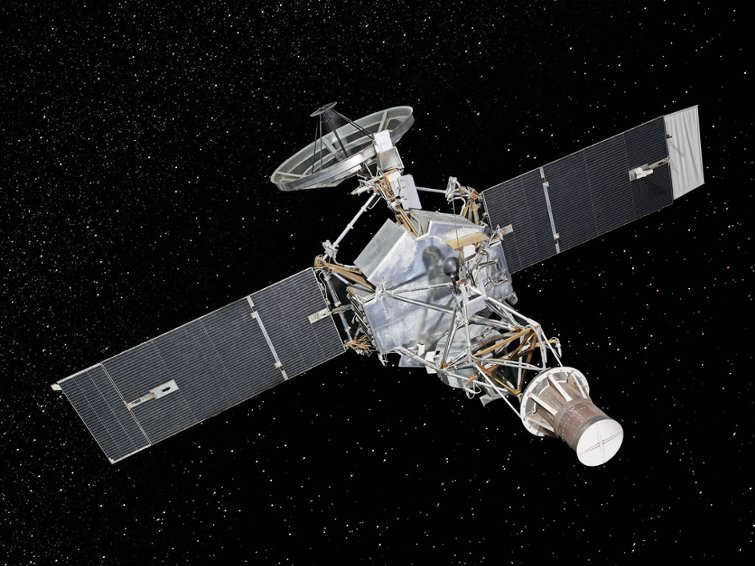
Different investigations
Aside from Mariner 2, Venus has been approached by various other spacecrafts:
- In 1973, the Mariner 10 spacecraft, which made the discovery that the atmosphere of Venus is in constant motion;
- In 1978, the Pioneer-Venera-1 probe, which extensively studied the clouds and determined the composition of the upper layers of the planet’s envelope;
- Also in 1978, the Pioneer-Venera-2 probe, which revealed that the concentration of argon in the local air was 50-500 times higher than Earth’s, detected water vapor beneath the clouds and high levels of molecular oxygen, and observed at least 3 distinct layers in the atmosphere;
- In 1983, the Venera-15 and Venera-16 stations collected data on the thermal radiation and atmospheric composition of the planet.
- In 1985, the instruments of the Vega mission analyzed the concentration of sulfuric acid in the clouds, detected sulfur, chlorine, and traces of phosphorus in the local atmosphere, and also measured meteorological parameters.
- From 1990 to 1994, NASA’s Magellan research probe orbited Venus for 4 years and continued to study its atmospheric layers.
- From 2005 to 2015, the European Space Agency’s Venus Express spacecraft spent nearly 10 years studying the atmosphere, discovering dark craters above the planet’s poles.
- In 2015, Japan’s Akatsuki station observed an arc-shaped structure in the clouds spanning between Venus’ poles.
The Soviet Venus exploration mission conducted studies of the planet’s atmosphere using ships. The first successful landing on Venus was accomplished by Venera 7. Prior to that, Venera-3 and Venera-4 had entered the atmospheric layers, but both of them failed during the landing process.
Currently, the key characteristics of the Venusian atmosphere have been established. It is primarily composed of carbon dioxide, accounting for 97% of the composition. The presence of dry, orange-yellow clouds generates a potent greenhouse effect, resulting in surface temperatures reaching up to +500 ° C. Precipitation is non-existent, while thunderstorms and lightning occur frequently.
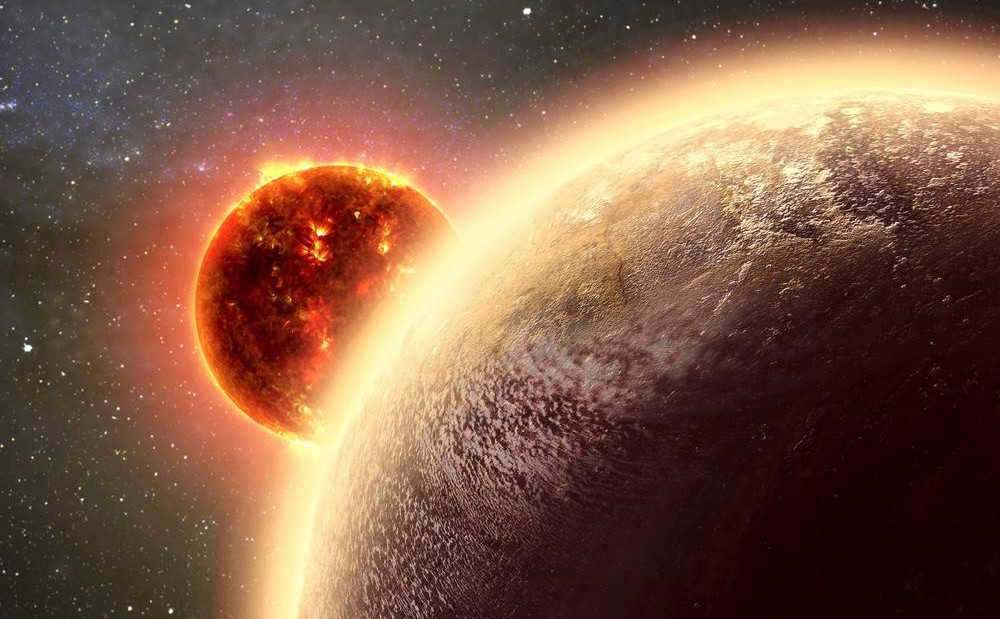
Nevertheless, scientists require further in-depth data, thus the Venera-D expeditionary undertaking is planned for imminent initiation. It will possess the capability to examine the physical and chemical attributes of the indigenous atmosphere and uncover the reasons behind the previous evaporation of water from the planet..
The Russian interplanetary station Venera-Glob intends to oversee the constitution of the intermediate and upper atmosphere, investigate the dissemination of its constituents, their chemical composition, dynamics, and interaction with the Venusian surface, although a definitive launch date remains undetermined.
309 years ago, on November 19, 1711, the birth of Mikhail Lomonosov, the Russian genius, was celebrated. To commemorate this special day, the public organization Russian Initiative has compiled a list of 10 of his most remarkable accomplishments.
Mikhail Lomonosov was an exemplary embodiment of a polymath, also known as a “universal man” – someone whose intellectual abilities, interests, and pursuits spanned across various fields.
As an encyclopedist, chemist, physicist, astronomer, geographer, metallurgist, geologist, poet, artist, philologist, historiographer, and genealogist, Lomonosov excelled in a multitude of disciplines, achieving remarkable success.
Mikhail Yurievich Lomonosov (1711-1765)
1. The Atmosphere of Venus was Discovered
On June 6, 1761, a truly remarkable event took place: the transit of Venus across the surface of the Sun. During this event, Mikhail Lomonosov observed a thin, glowing halo surrounding the planet and became the first to propose that Venus had its own atmosphere. His hypothesis was later confirmed, and this optical phenomenon became known as the Lomonosov effect.
2. Pioneered the field of glass science and produced numerous mosaic artworks
The field of glass science was born at the crossroads of physics and chemistry, becoming a realm of study for both disciplines. Lomonosov not only delved into the theoretical aspects, but also worked on developing production techniques. As a result, he established the groundwork for manufacturing colored glass, and even crafted one-of-a-kind mosaic masterpieces. Among his most renowned works is the iconic artwork titled “The Battle of Poltava”.
3. Laying the groundwork for economic geography
Thanks to Lomonosov, the concept of “economic geography” was introduced and established as a discipline. This area of study focused on analyzing a country’s economy, natural resources, and labor force. As the leader of the geographical department at the Academy of Sciences, Lomonosov played a crucial role in establishing the framework for studying Russia through the lens of economic geography.
During his childhood, Lomonosov was fascinated by the aurora borealis and had an insatiable curiosity to uncover the underlying reasons for this captivating natural spectacle. He became the pioneer scientist to classify the aurora borealis as “a phenomenon characterized by the presence of electric force in the atmosphere.” Contemporary interpretations now describe it as “the luminous illumination emanating from the higher strata of the Earth’s atmosphere,” aligning closely with Lomonosov’s all-encompassing understanding as a polymath.
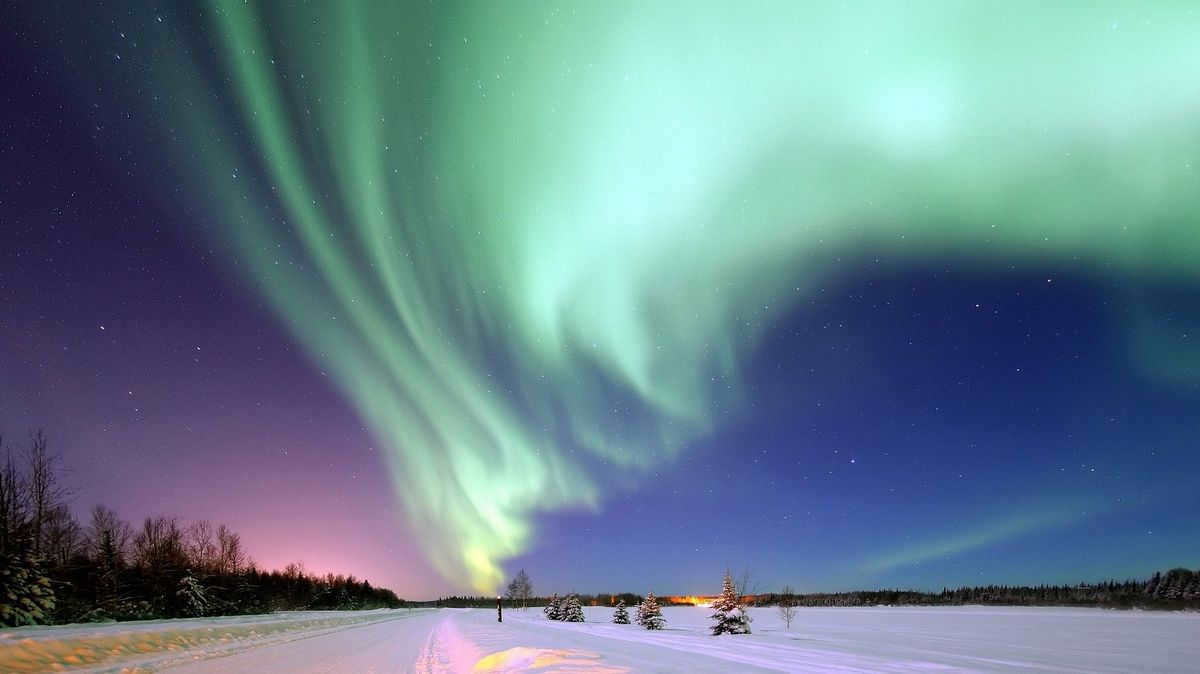
The Aurora Borealis in Alaska, USA
5. Pioneered the field of physical chemistry
Modern physical chemistry investigates the principles of the structure, composition, and transformation of chemical substances using methods from physics. It was Lomonosov who established the groundwork for this field. In his own words, “physical chemistry is a discipline that explains, based on principles and experiments from physics, what occurs in mixed bodies during chemical processes.”
6. The pioneer in obtaining solid mercury
Prior to Lomonosov’s groundbreaking experiments, no scientist had managed to obtain mercury in its solid form. It was only in December 1759 that Joseph Braun succeeded in achieving this feat. Lomonosov subsequently conducted further research, confirming not only the electrical conductivity but also the malleability of mercury, leading to its classification as a metal.
7. Formulated the Corpuscular-Kinetic Theory
The concepts proposed by the Russian scientist have often foreshadowed the development and principles of contemporary science. An illustration of this is the formulation of the corpuscular-kinetic theory. Through a series of scientific experiments, Lomonosov postulated that all substances are composed of corpuscles known as molecules, which in turn are composed of individual elements known as atoms. This theory is presently referred to as the molecular-kinetic theory.

A reproduction of the painting “M. V. Lomonosov shows Catherine II his own mosaic works in his study” (1890) by Alexei Kivshenko.
8. The Creation of “Russian Grammar”
Mikhail Lomonosov is credited with creating “Russian Grammar” in 1755, which laid the groundwork for the development of the Russian literary language. He identified 30 letters in the Russian alphabet, defined eight parts of speech, six cases, ten verb tenses, three moods, and six word orders. “Grammar” served as the foundation for the advancement of Russian philology.
9. Implemented a reform of Russian versification
During the period known as the “golden age” of Russian poetry, a significant breakthrough occurred thanks to the efforts of Mikhail Lomonosov. Working alongside Vasily Trediakovsky, he pioneered the introduction of syllabo-tonic versification in Russia. This revolutionary approach to organizing verse involved the use of alternating stressed and unstressed syllables, and quickly became the dominant system in Russian poetry during the early 18th century.
10. The Russian language dictionary has been revised
Thanks to Lomonosov’s contributions, the Russian language has been enriched with new words and scientific terminology, which have since become part of everyday life. Some of these words include “horizon”, “matter”, “pole”, “radius”, “minus”, “formula”, “optics”, and many more.

“A Concise Manual on Eloquence” (1748) by M. V. Lomonosov
The revelations made by Lomonosov are numerous and extensive, however, the most effective approach to discussing his accomplishments can be summed up by Pushkin:
On the occasion of Mikhail Lomonosov’s 309th birthday, the non-profit organization Russian Initiative has put together a compilation of ten of his most notable accomplishments. The multitude of incredible breakthroughs made by this “universal” genius in Russia has had a profound impact on modern science, making it virtually impossible to envision the field without his contributions.
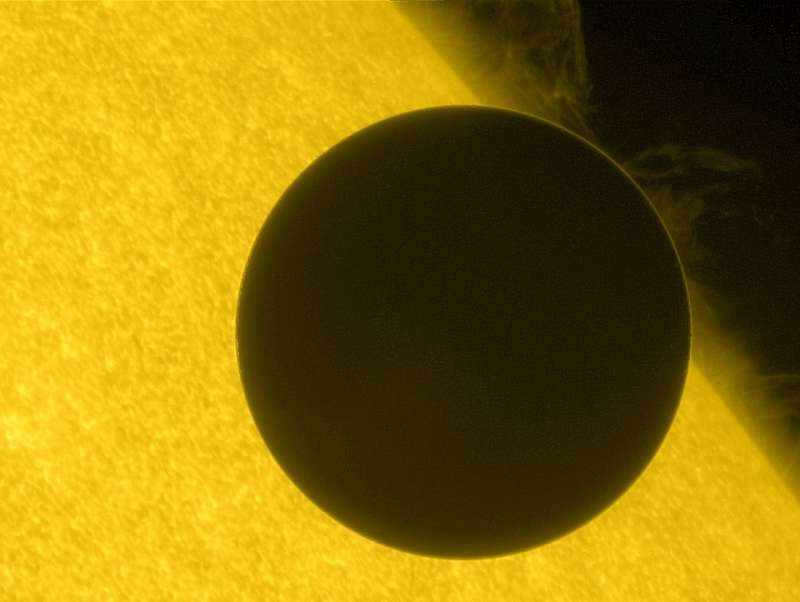
Venus is one of the celestial bodies that can be easily observed with the naked eye. Due to its prominent visibility throughout history, it is difficult to determine the exact moment and person who first discovered Venus. However, it has been known to ancient civilizations for thousands of years, as it is the third brightest object in the sky after the Moon and the Sun.
Although the discovery of Venus cannot be attributed to a specific individual, historians have evidence of its early observations. The oldest surviving astronomical records, dating back to 1600 BC, mention Venus in Babylonian texts. Moreover, Venus has played a significant role in the mythologies of various ancient cultures, including the Mayans and the Greeks.
Galileo Galilei was the first person to observe Venus through a telescope in 1610.
Despite using an imperfect telescope, Galileo was able to witness Venus going through phases similar to the Moon. These observations provided evidence for the Copernican theory, which suggested that planets orbited the Sun rather than the Earth, as previously believed.
Discovery of the atmosphere
Astronomers made a prediction that Venus would cross over the surface of the Sun. This event was initially observed on December 4, 1639, and subsequently, astronomers made the groundbreaking discovery that the planet possesses an atmosphere. This discovery also enabled them to accurately determine the distance between the Earth and the Sun.
Our esteemed scientist Mikhail Lomonosov is credited with the discovery of Venus’ atmosphere.
The most recent transit of the planet occurred in 2012, and the next one will take place in the near future.
Despite the presence of dense clouds concealing the surface of Venus, radar signals are able to bounce off of it.
A radar study conducted in 1961 allowed astronomers to precisely calculate the radius of Venus and measure its rotational speed. They also made the significant finding that the axis of rotation has an inclination close to zero.
The initial spacecraft to venture to the planet was NASA’s Mariner 2 probe, which made a flyby in 1962.
More recently, NASA’s Magellan spacecraft explored the planet and examined its surface in depth utilizing radar.
The Venus Express probe from the European Space Agency arrived in May 2006 and has been conducting exploration of the planet ever since.
The first spacecraft to successfully land on the surface was Venus 7, although its operation only lasted for approximately 35 minutes.
Therefore, it is difficult to determine who exactly discovered Venus. It could have been the first caveman who ventured out in the early evening and observed a bright star. However, with the invention of the telescope and the commencement of the space age, scientists have actually been able to rediscover this celestial body known as the morning star.
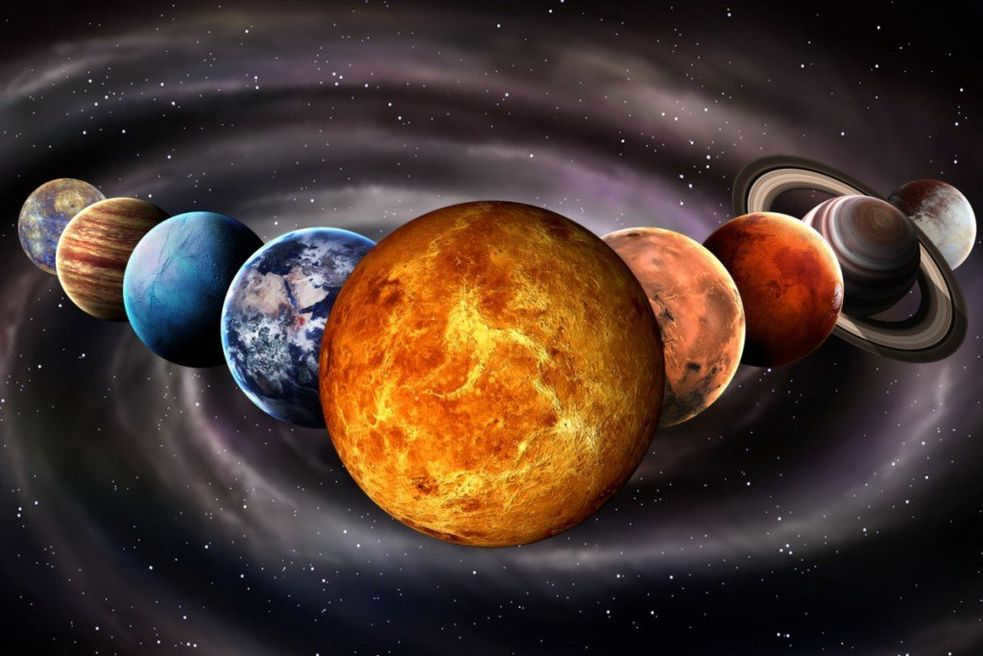
The atmosphere of Venus consists of 96% carbon dioxide, resulting in a greenhouse effect on the planet’s surface. The atmospheric pressure on the Morning Star is 95 times greater than that on Earth.
If a coin were to be thrown from the high atmosphere of this celestial body, it would descend slowly, as if moving through a column of water. Walking on the surface of Venus is as challenging as navigating the depths of the ocean floor. Additionally, if the wind were to suddenly pick up, an individual would be carried away effortlessly, much like a lightweight piece of debris.
However, the notion of encountering human beings on Venus remains purely fictional, as the temperature of the environment reaches nearly 500 degrees Celsius and intermittent acid rainstorms occur.
Writing Piece
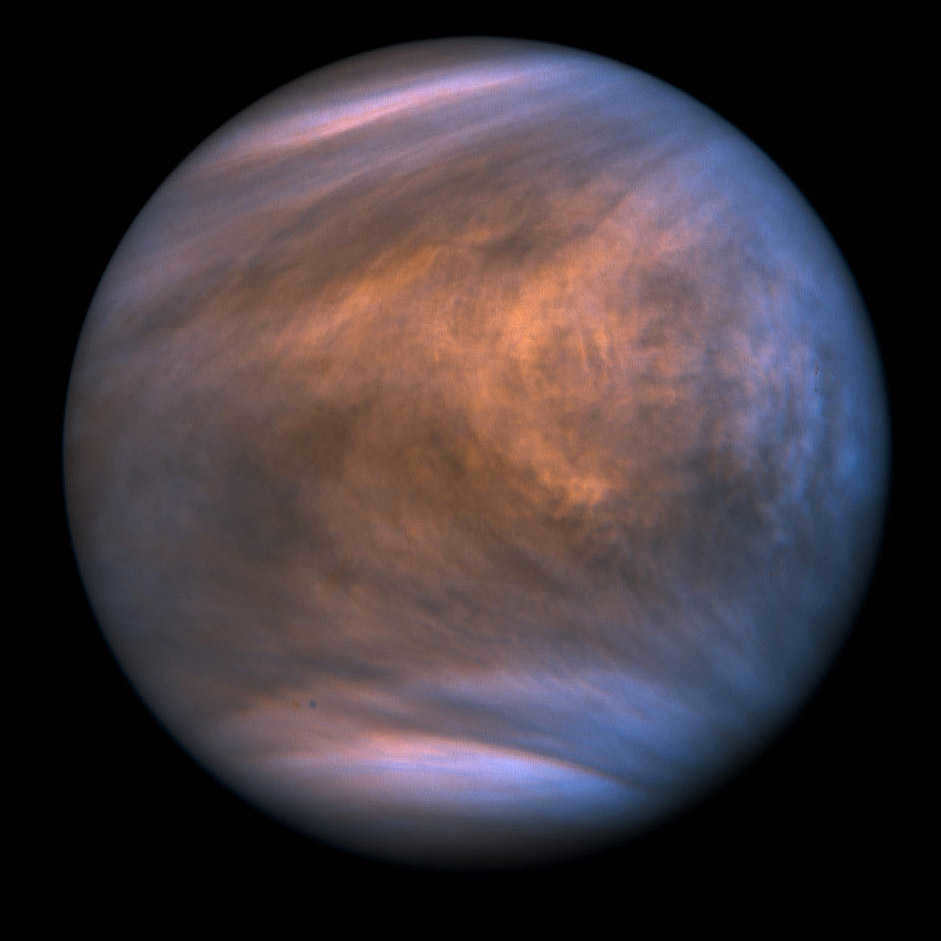
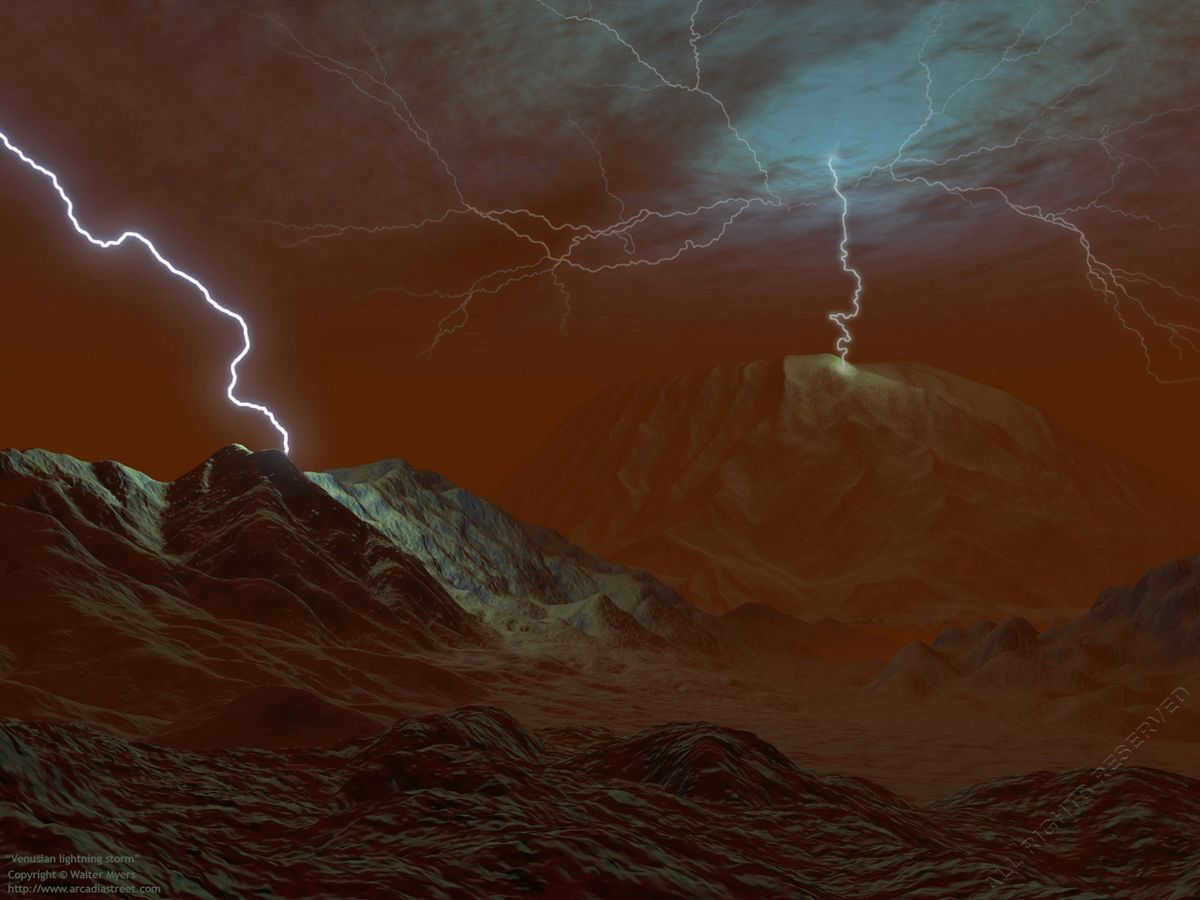
The atmosphere of Venus is the most dense of all the terrestrial planets, which also include Earth, Mars, and Mercury. It consists of 96.5% carbon dioxide, 3.4% nitrogen, and 0.5% of a mixture of other gases.
Composition of Venus’ atmosphere:
| Carbon dioxide | 96.5% |
| Nitrogen | 3.4684% |
| Sulfur dioxide | 0.0180% |
| Argon | 0.0070% |
| Water vapor | 0.0030% |
| Carbon monoxide | 0.0017% |
| Helium | 0.0012% |
| Neon | 0.0007% |
Because Mars has a dense atmosphere, the pressure on its surface is 95 bar, which is 95 times greater than the pressure on Earth’s surface. To put it in perspective, this pressure level is similar to what is found in the deep regions of Earth’s oceans, about 1 km below the surface.
Different Layers
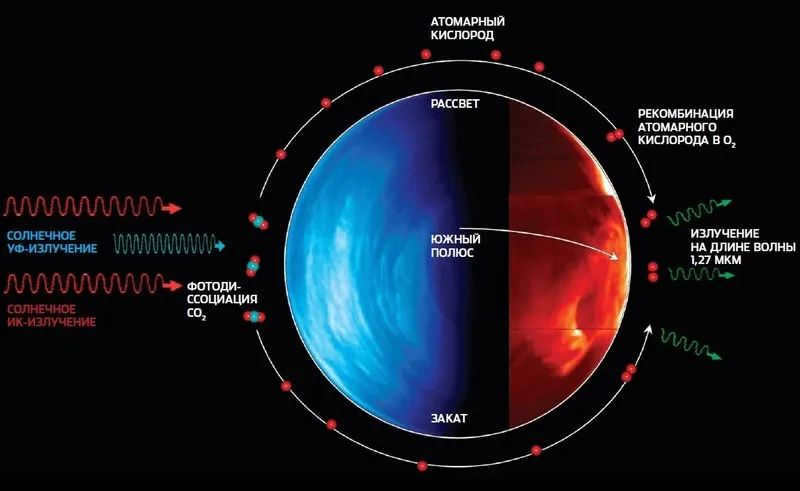
The atmosphere of Venus is composed of six layers with a combined height of 350 km. The boundary of the denser part of the atmosphere is located 100 km from the planet’s surface. During the daytime, this layer heats up to temperatures of 25-27 °C, while at night it cools down to -173 °C.
An overview of the different layers of Venus’ atmosphere:
Troposphere
The troposphere reaches a height of 50 km and is divided into different zones. The lower 5 km is known as the “ocean zone” because it contains a unique mixture of liquid and gaseous CO2, forming a supercritical fluid. This fluid has a high viscosity, causing wind currents to move slowly near the surface, with speeds ranging from 1 m/s to 3 m/s.
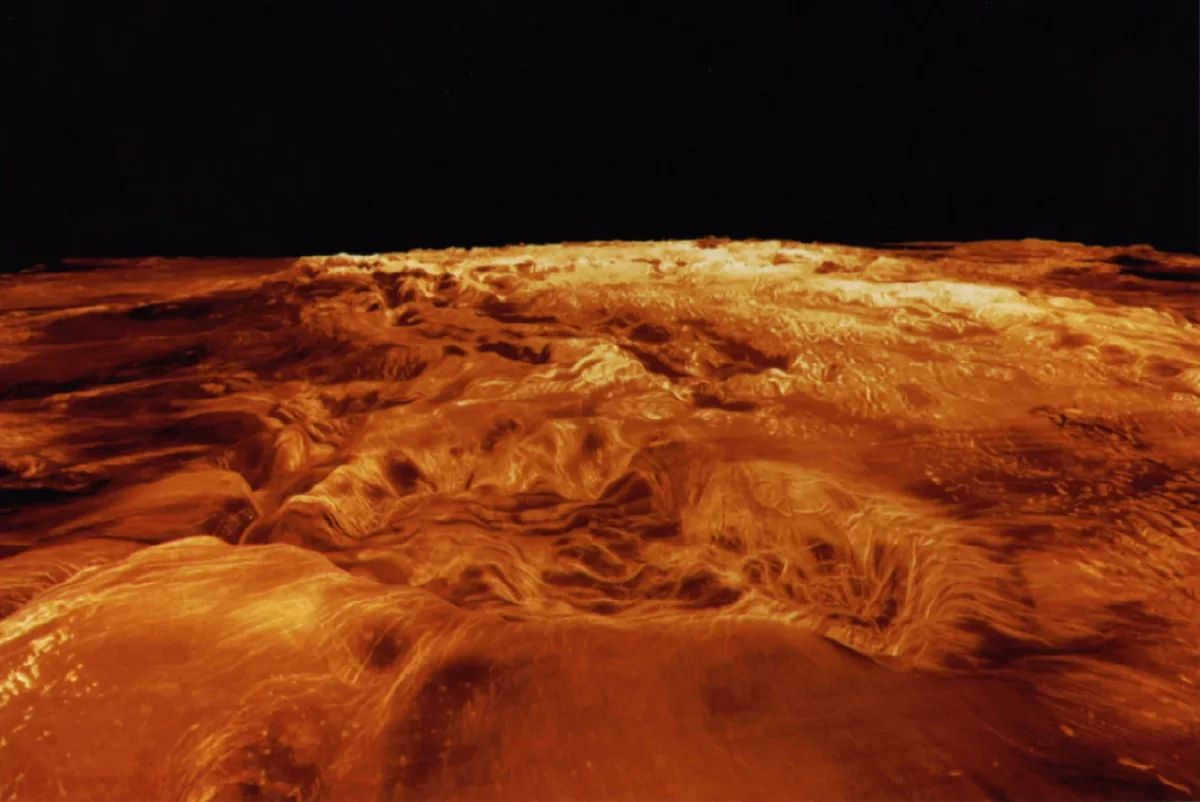
The area above the ocean zone on Venus contains a layer of uniform sulfuric acid fog. This region holds more than 90% of the planet’s atmospheric mass.
The troposphere, which is the lowest layer of Venus’ atmosphere, has the highest density. In its lower regions, the pressure reaches 93.3 bar and the temperature almost reaches 500 °C. As you move further away from the planet’s surface, both the pressure and temperature decrease. In the upper part of the troposphere, wind speeds are similar to those on Earth and can reach up to 100 m/s.
The Tropopause
The Tropopause marks the boundary region between the troposphere and the mesosphere. Situated at an altitude of 50-65 km above the Earth’s surface, this layer experiences temperatures that can range from 20-37 °C. At the 50 km mark, the pressure is equivalent to 1 atmosphere.
The Mesosphere
The Mesosphere begins at an altitude of 65 km above the solid surface of our planet. Along its lower boundary, the upper edge of the sulfuric acid clouds can be found. This layer primarily consists of hydrogen and carbon dioxide in a rarified state. The temperature within the mesosphere can vary between -40 °C and 20 °C.
Mesopause
The mesopause is the boundary between the mesosphere and the thermosphere in Earth’s atmosphere. It is located at an altitude of about 80-85 kilometers (50-53 miles) above the Earth’s surface. At this height, the temperature reaches its lowest point, dropping to around -90 degrees Celsius (-130 degrees Fahrenheit).
The mesopause is an important region of the atmosphere because it is where many interesting phenomena occur. One of these phenomena is the formation of noctilucent clouds, which are thin, wispy clouds that glow at night. These clouds are composed of ice crystals and are only visible at high latitudes during the summer months.
Another interesting phenomenon that occurs at the mesopause is the dissipation of gravity waves. Gravity waves are waves that propagate vertically in the atmosphere and are caused by disturbances such as thunderstorms, winds, and topography. As these waves reach the mesopause, they dissipate and transfer their energy to the surrounding air molecules.
The mesopause is also the region where meteors burn up upon entering the Earth’s atmosphere. When a meteor enters the atmosphere, it heats up due to friction with the air molecules. At the mesopause, the temperature is low enough for the meteor to completely burn up, resulting in a bright streak of light known as a shooting star.
In summary, the mesopause is a fascinating region of the atmosphere where many interesting phenomena occur. From the formation of noctilucent clouds to the dissipation of gravity waves, this boundary between the mesosphere and the thermosphere is a dynamic and active part of Earth’s atmosphere.
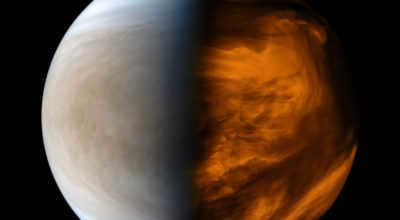
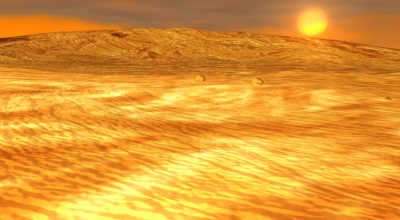
Situated between the mesosphere and the thermosphere, the Venusian atmosphere occupies a unique position. Found at an elevation of 95-120 km, this layer experiences temperatures ranging from -108 °C to 50 °C.
Thermosphere
The thermosphere is situated at a distance of 120-220 km from the surface of the planet. On the night side of Venus, the thermosphere is known to be the coldest region, with temperatures dropping down to -173 °C.
Exosphere
The exosphere marks the uppermost layer of Venus’ atmosphere and acts as a boundary between the planet and space. It can be found at an altitude ranging from 220 to 350 km above the planet’s surface. This region is characterized by a sparsely populated ionized gas.
Sulfuric acid clouds in the sky
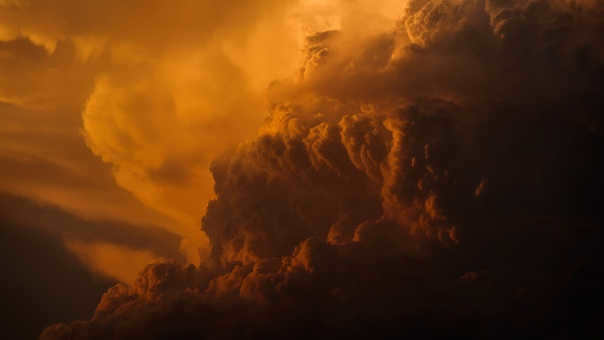

Venus is surrounded by a complex layer of clouds made up of sulfuric acid. These clouds can be found at an altitude of 48-68 km above the planet’s surface. Above and below this dense cloud layer, there are other clouds that are less dense but still visible.
The clouds on Venus are composed of droplets of concentrated sulfuric acid, as well as small amounts of phosphoric acid, sulfonic acids, and sulfur. The size of the cloud particles can vary, ranging from 2-3 microns in denser regions to 0.5 microns in less dense areas. Interestingly, the cloud cover at the poles of Venus is much thicker compared to other parts of the planet.
Unlike the white clouds we see on Earth, the clouds on Venus have a yellowish color and are quite bright. They reflect approximately 85% of the sun’s rays, resulting in a semi-darkness on the planet’s surface.
Storms and electric discharges

Observations from the automatic space stations “Venus” and “Mega” have revealed significant electrical activity in the atmosphere of Venus.
The intensity of lightning on Venus is approximately half that of Earth. The lightning originates in a similar manner to our planet, with the only distinction being that Earth’s clouds contain water vapor while Venusian clouds contain sulfuric acid vapor.
Acidic Precipitation on Venus
Periodically, Venus experiences episodes of heavy precipitation consisting of highly concentrated sulfuric acid. These raindrops are formed in the higher layers of the planet’s atmosphere, but due to the extreme temperatures in the lower atmosphere, they never make contact with the solid surface. Instead, they quickly evaporate and transform into gaseous form, ultimately recondensing into cloud formations.

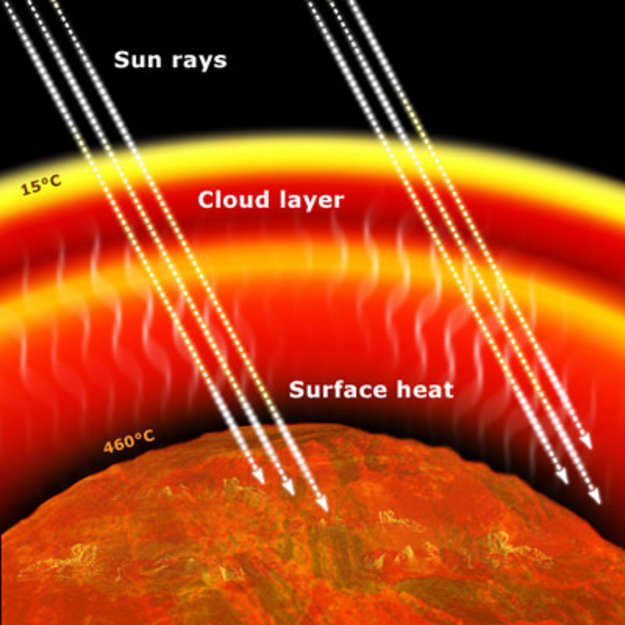
However, the origin of sulfuric acid in the atmosphere of Venus remains a mystery. It appears that the planet’s surface is home to a multitude of volcanoes. Some of these volcanoes have long been dormant, while others remain active, releasing significant quantities of sulfur into the atmosphere.
Due to the extreme temperatures reaching up to 500°C on the planet’s surface, sulfur does not stay on the ground, but instead evaporates and accumulates in the atmosphere. Once in the atmosphere, sulfur reacts with carbon dioxide and undergoes a transformation into sulfuric acid through the combined effects of heat, water vapor, and sunlight.
Strong Winds of a Hurricane
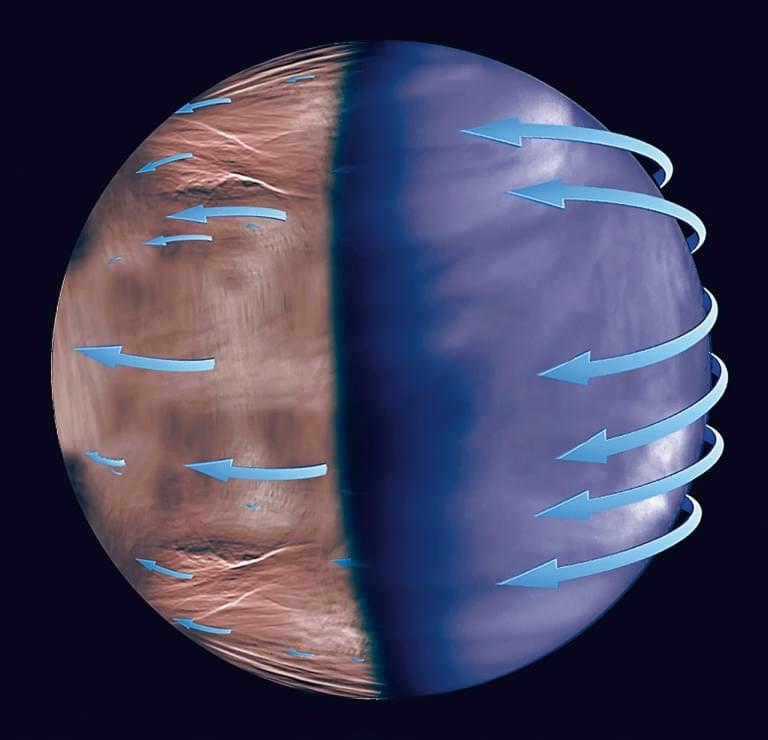
The movement of Venus’ atmosphere is quite peculiar and does not follow conventional logic. While the planet completes only 1.5 rotations around its axis in an Earth year, the clouds manage to encircle the entire planet in a mere 4 days.
The upper cloud layer experiences constant winds, with air masses moving from east to west at a staggering speed of 100 meters per second. However, in the lower layers of the atmosphere, the wind speed significantly decreases, and near the surface, it barely exceeds 1 m/s.
This phenomenon can be easily explained: Venus maintains a stable temperature without any fluctuations, unlike Earth, which leaves the winds with no source to originate from.
The reason behind the stable and fast winds in the upper atmosphere remains a mystery to scientists, who will need to solve this enigma in the future.
While the wind blows at low speeds on the planet’s surface, it has the ability to shape the landscape by moving large amounts of material. Radar images reveal sand dunes and weathered rock formations.
Based on the unique characteristics of Venusian landscape, it can be inferred that the winds on the planet blow towards the equator. This behavior of air masses is also observed on Earth.
Maybe in certain areas, they adhere to the same pattern of Hadley cells, where atmospheric gases experience peak heating at the equator, then ascend, travel to the highest altitude, cool down, and swiftly move towards the planet’s poles to descend once more to the surface and initiate their voyage back to the equator.
Polar cyclones
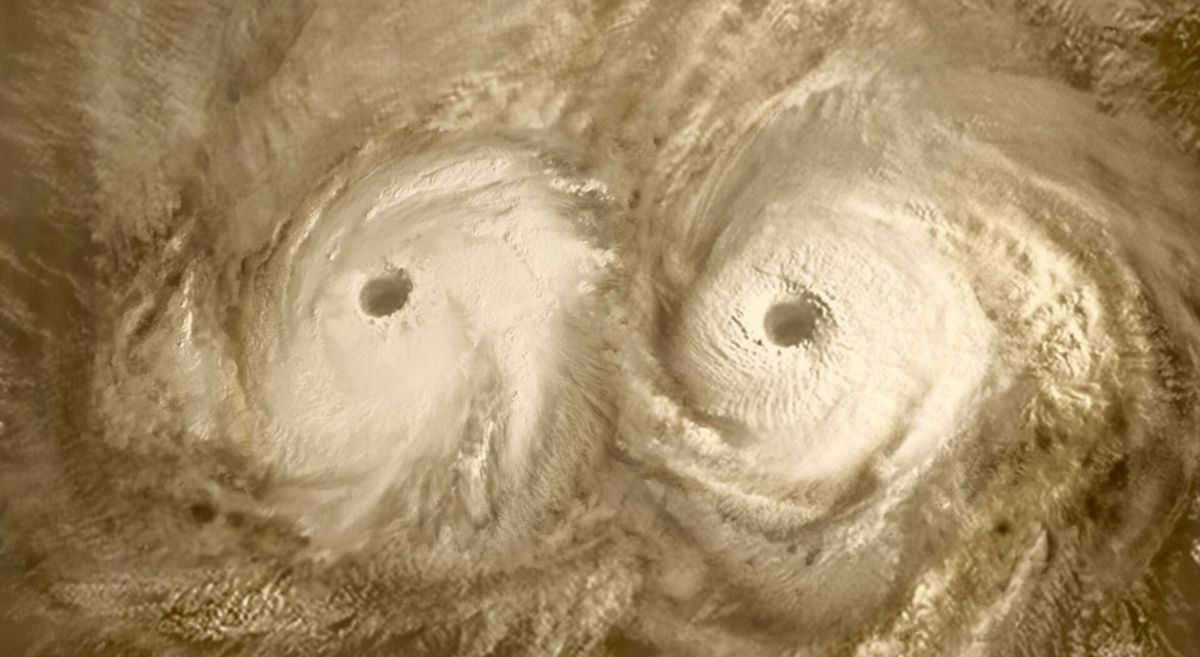
Venus is known for its polar vortices, which are massive tornadoes that are four times larger than those on Earth. These hurricanes are created when hot air from the equatorial regions merges at the poles and begins to swirl. Each polar vortex has a unique double eye and a distinct cloud pattern that resembles the shape of an S.
Venus possesses one of the most elevated surface temperatures in our solar system, all thanks to its colossal greenhouse effect. It might be assumed that Venus, being closer to the Sun, has a warmer atmosphere compared to Earth’s. However, the reality is that only 1/5 of the sunlight actually reaches the planet’s surface, while the remaining 4/5 is reflected back into space by the clouds. Consequently, Venus is even less warmed by sunlight than Earth.
The lower layers of clouds, along with the planet’s surface, not only absorb solar energy but also re-radiate it in the infrared spectrum. The dense atmosphere and cloud cover prevent this radiation from escaping into outer space, causing it to be reflected back to the surface, similar to the way a cotton blanket works. As a result, the planet’s surface gradually heats up to nearly 500 °C.
Research History
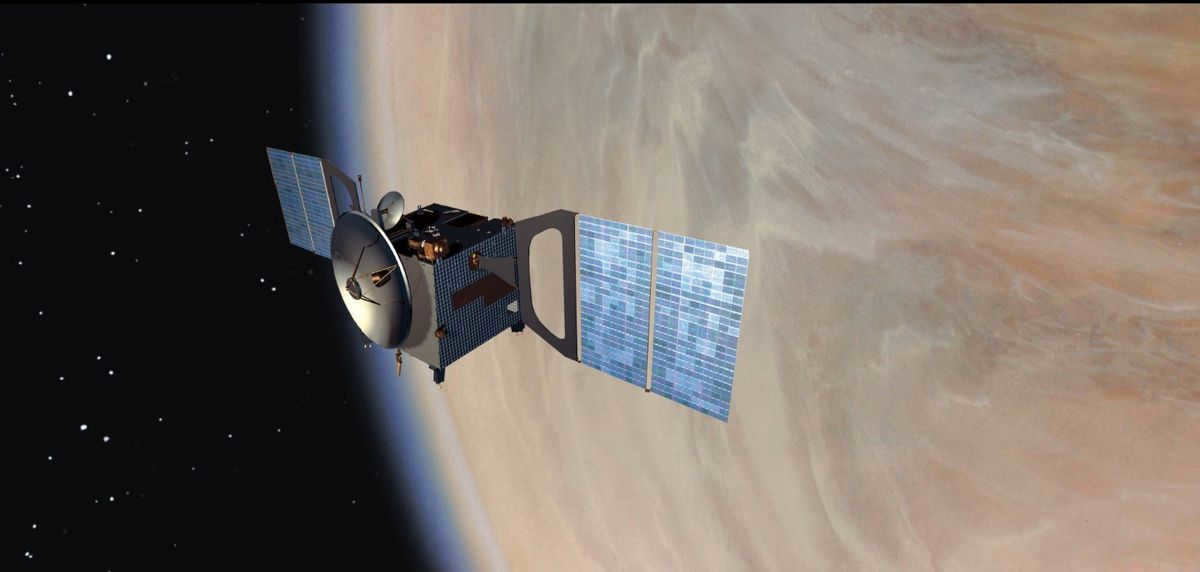
Venus has been observed for centuries. It has undergone extensive examination using telescopes, radar, spectroscopes, and space probes.
Unveiling the Atmosphere
In 1761, the Russian scientist M.V. Lomonosov made a remarkable discovery by observing Venus’ motion against the backdrop of the solar disk. He astutely interpreted the optical phenomenon as a luminous halo surrounding the planet. Lomonosov concluded that this radiant halo is a consequence of the sun’s rays being refracted within Venus’ atmosphere.
“The atmosphere of Venus is enveloped by a majestic layer of air,” stated M.V. Lomonosov. – A similar atmosphere encases our planet Earth.
Recent studies in the 20th century
Thanks to the development of advanced telescopes and spectroscopes, researchers could analyze the chemical makeup of Venus’ atmosphere and discovered that it is primarily composed of carbon dioxide.
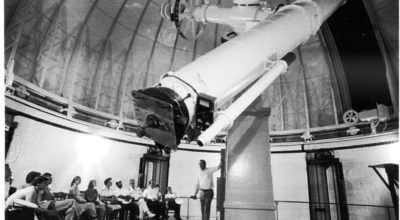
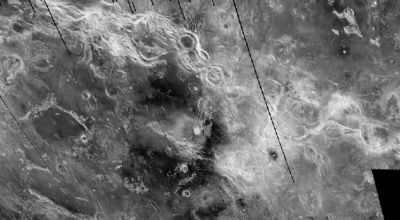
Through this finding, we have been able to deduce that the lower regions of its atmosphere experience incredibly elevated temperatures. By utilizing ground-based radar and telescopes equipped with various wavelength capabilities, we have been able to penetrate Venus’ cloud covering and capture images of its terrain.
Exploring Space Missions
Space probes such as the Venus and Mariner have ventured into the atmosphere of Venus.
The initial triumphs came with the Venus-3 and Venus-4 missions. The Venus-4 mission, in particular, revealed that the planet’s gas envelope was far more dense than scientists had previously estimated, resulting in a prolonged descent for the spacecraft.
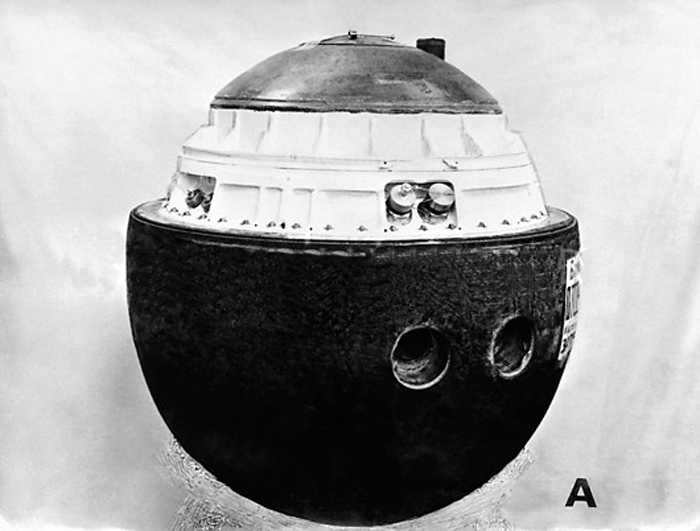
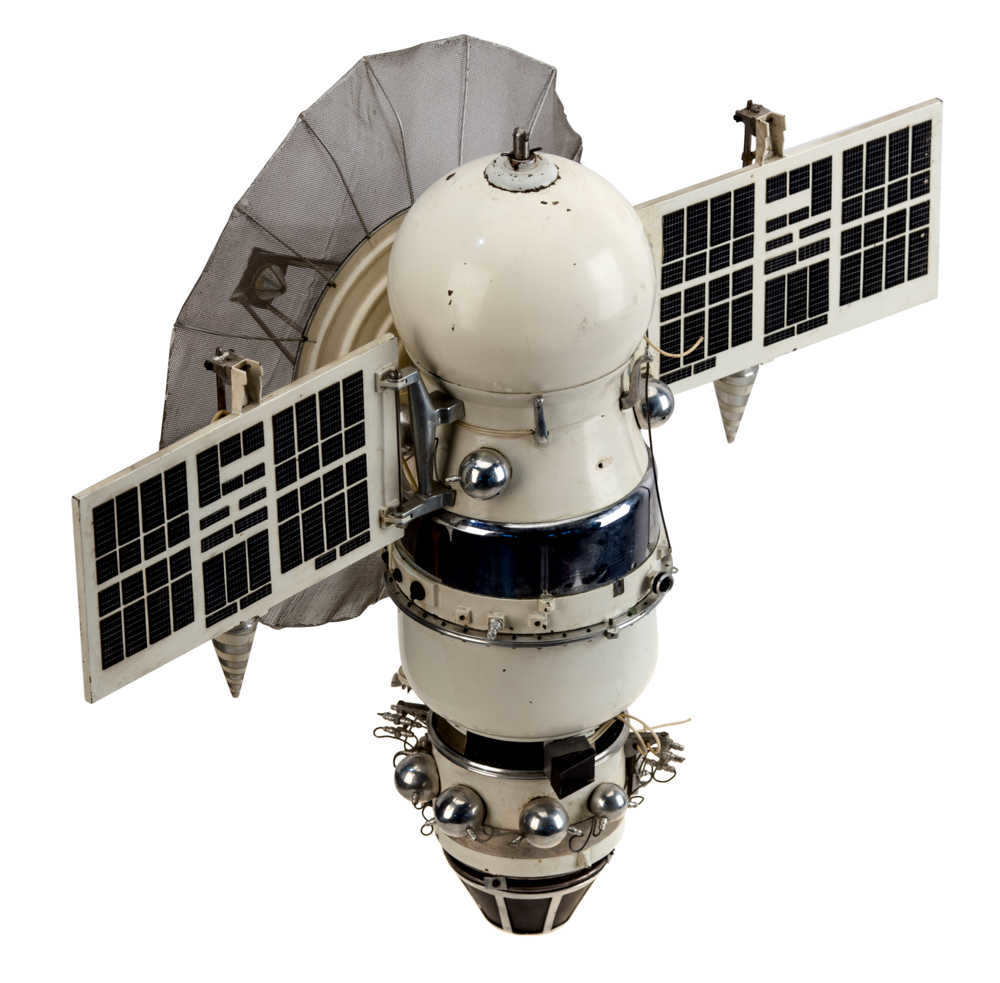
The battery of the probe was depleted before it reached the surface of the planet. Nonetheless, the device successfully conducted several planned experiments. It ascertained that the planet’s surface temperature is approximately 500 ° C, and its gaseous envelope consists of 90-95% carbon dioxide.
Subsequently, the Venera-5 and Venera-6 probes were launched, acquiring extensive data on the planet’s atmosphere. However, at a distance of 20 km from Venus’ surface, they were crushed by the immense atmospheric pressure.
Each new mission to Venus provides a plethora of significant and unique information about the planet. It is difficult to fathom what mysteries about the Morning Star scientists will unravel in the near future.

Meteorite Protection
The atmosphere of Venus provides a dependable shield against meteorite impacts, safeguarding the planet’s surface. It incinerates any substantial or moderate-sized space debris, preventing them from reaching the solid ground. While large asteroids exceeding 50 kilometers in size may manage to reach the planet’s surface, they will experience a loss of up to 50% of their mass during their descent.
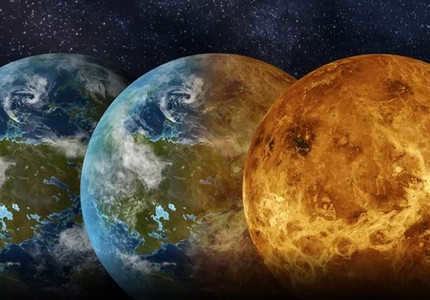
In a similar fashion to Earth, Venus is a scorching hot planet
Scientists propose that 4 billion years ago, the atmosphere of Venus resembled that of Earth, complete with liquid water. However, the irreversible greenhouse effect caused the temperature near the planet’s surface to skyrocket to nearly 500°C. Calculations indicate that without the greenhouse effect, Venus would have had a maximum temperature of only 80°C.
The unfortunate state of Venus

There is a theory that Venus experienced a major celestial impact millions of years ago, causing the planet to reverse its rotation. This collision resulted in the loss of Venus’s magnetic field and the evaporation of its water vapor due to the solar wind. Venus is often referred to as Earth’s sinister twin, as it now possesses the most extreme conditions in the entire solar system.

